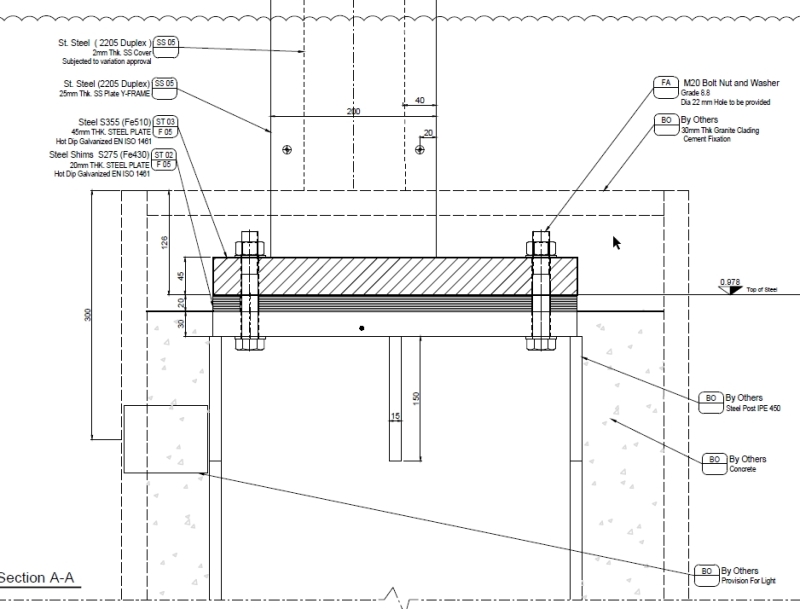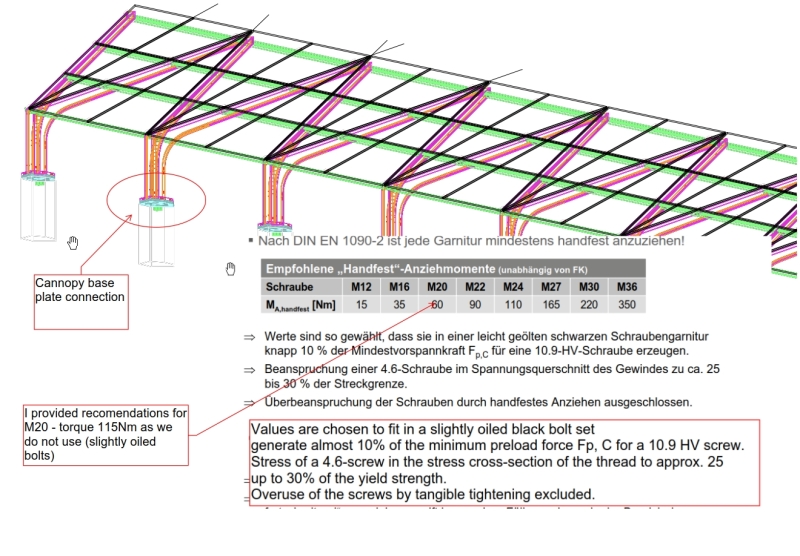KubusKubus
Structural
- Nov 12, 2017
- 8
Hello all,
I would like to ask what is the Torque/ tightening force for NON-Preloded bolts (regular bolts). I have a standard tension connection. There is a lot of guidelines what is the torque value to achieve 75 % of yield load.
But I can't find what is the standard value of the torque (with particular friction coefficient) to tighten bolts as much to not get loose during work life.
Only value which if found is for bearing connection which is very ambiguous:
Tightening of the bolts: connected elements should be cling together. Tolerance less than 2 mm
is acceptable if this is not give in design recommendations. Bolts should be manual tightening
till “first point of resistance”. First point of resistance is defined as a tightening nominal hand
wrench with one hand power.
I would like to ask what is the Torque/ tightening force for NON-Preloded bolts (regular bolts). I have a standard tension connection. There is a lot of guidelines what is the torque value to achieve 75 % of yield load.
But I can't find what is the standard value of the torque (with particular friction coefficient) to tighten bolts as much to not get loose during work life.
Only value which if found is for bearing connection which is very ambiguous:
Tightening of the bolts: connected elements should be cling together. Tolerance less than 2 mm
is acceptable if this is not give in design recommendations. Bolts should be manual tightening
till “first point of resistance”. First point of resistance is defined as a tightening nominal hand
wrench with one hand power.



